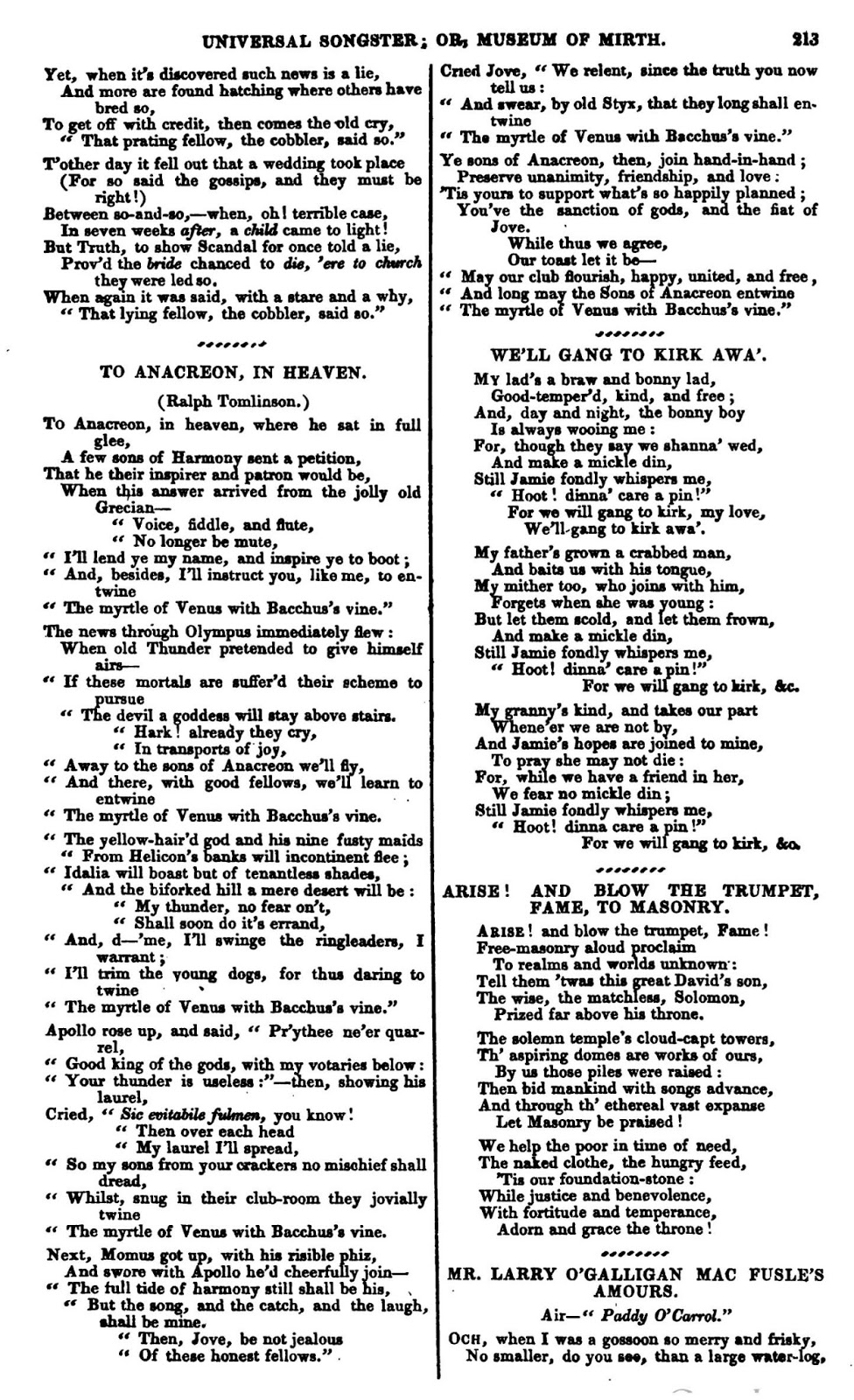 |
| [38] Cartoon by William Charles (1776-1820), woodcut by Benson John Lossing (1813-91), celebrating the capture of HMS Frolic by the U.S. sloop-of-war Wasp on October 18, 1812. |
by E.M Sanchez-Saavedra
“The War of 1812 has no compelling narrative that appeals to the average American. It’s just a hodgepodge of buildings burning, bombs bursting in air and paintings being saved from invaders.” — Jerald Podair
 |
| [39] “Defense of Fort M’Henry” by “a gentleman” in The Analectic Magazine, November 1814. (Altered image, showing both page-sides.) |
 |
| [40] Ralph Tomlinson’s lyrics “To Anacreon, In Heaven,” upon which Francis Scott Key based his “Defense of Fort M’Henry.” |
 |
| [41] The Analectic Magazine, October 1814. Major General Winfield Scott. Painted portrait by Joseph Wood (1778-1830), engraving by David Edwin (1776-1841). |
 |
| [42] The Analectic Magazine, 1814. Portrait of General Zebulon Montgomery Pike by Thomas Gimbrede (1781-1832). |
 |
| [43] The Analectic Magazine, 1814. David Porter Esq. of the United States Navy. Painted portrait by Joseph Wood, engraving by David Edwin. |
 |
| [44] The Analectic Magazine, Volume 7, 1816. Frontispiece and title page. |
 |
| [45] The Analectic Magazine, March 1816. Painted portrait of Captain Thomas Mac Donough, U.S.N. by John Wesley Jarvis (1781?-1839), engraving by Thomas Gimbrede (1781-1832). |
 |
| [48-51] Pages from Potter’s Compendium, 1824, giving the commands and actions of the Infantry manual of arms. |
 |
| [49] |
 |
| [50] |
 |
| [52] Potter’s Compendium, 1824. The uniforms shown illustrate military fashion of the period 1800-10. |
 |
| [54] Title page of a collection of official documents relative to the military and naval operations of the War of 1812, printed in Washington, D.C. in 1823. |
 |
| [57] The New-England Palladium, Boston, October 1813. A typical page of advertising during the War of 1812. |
 |
| [58] Map of “United States,” from A New and Elegant General Atlas, published in May 1812 by Thomas and Andrews of Boston, Massachusetts. |
 |
| [59] “Trade and Commerce,” a design by William Marshall Craig (fl. 1788-1827), engraved by (?) Robinson. From The Self Instructor, or, Young Man’s Best Companion, published in Liverpool in 1811. |
♦

















No comments:
Post a Comment